In a world where multitasking reigns supreme and to-do lists seem to grow faster than a Chia Pet, simplifying tasks is the secret weapon everyone needs. Imagine slicing through your daily grind like a hot knife through butter, leaving chaos in the rearview mirror. It’s not just a dream; it’s a reality waiting to happen.
Table of Contents
ToggleUnderstanding The Concept Of Simplifying Tasks
Simplifying tasks involves breaking down complex activities into manageable parts. Focusing on essential steps helps individuals navigate their responsibilities efficiently.
Importance Of Simplification
Simplification plays a crucial role in maintaining productivity. By minimizing distractions, individuals can concentrate on tasks that matter most. Efficient processes lead to improved time management. Streamlining activities reduces overwhelm, fostering a clearer mindset. Prioritizing simplicity allows for better decision-making amid chaos.
Benefits Of Simplifying Tasks
Simplifying tasks brings multiple advantages. It enhances focus and reduces stress levels. An organized approach to workloads results in greater productivity. Clarity gained from simplification enables individuals to complete tasks faster. This structured method often leads to increased satisfaction in daily routines. Emotional well-being improves when individuals manage their to-do lists effectively.
Techniques To Simplify Tasks

Simplifying tasks involves practical techniques that enhance productivity and reduce overwhelm. Implementing these strategies leads to a more efficient workflow and improved time management.
Prioritization Methods
Identifying priorities helps focus on essential tasks. Utilizing techniques like the Eisenhower Matrix allows individuals to categorize tasks based on urgency and importance. Tasks with high urgency and high importance take precedence, while those less pressing can be scheduled for later. Individuals can also benefit from the ABCD prioritization system, where tasks are labeled according to their significance. Regularly reviewing and adjusting priorities ensures alignment with current goals. Consistently applying these methods leads to better time allocation and task completion rates.
Decluttering Your Workflow
Minimizing distractions fosters a clearer focus. Streamlining workflows begins with eliminating unnecessary tasks that clutter daily schedules. Decluttering digital workspaces enhances efficiency by organizing files and emails. Designating specific times for routine tasks prevents them from intruding on more critical activities. Establishing clear boundaries, such as designated work hours, separates professional tasks from personal ones. Regular breaks contribute to maintaining high levels of productivity and creativity. By prioritizing clarity, individuals can navigate workflows more fluidly and maintain their focus on essential tasks.
Tools To Help Simplify Tasks
Various tools exist to streamline daily tasks, enhancing efficiency and effectiveness. These options cater to individual preferences and needs.
Productivity Apps
Productivity apps organize tasks and enhance focus. Popular options include Todoist and Trello, which allow tracking and prioritizing tasks visually. Users benefit from features like reminders and deadlines, ensuring timely completion. Beyond task tracking, apps like Evernote facilitate seamless note-taking, organizing ideas and information in one place. By employing these apps, individuals reduce mental clutter and foster a structured environment.
Automation Tools
Automation tools simplify repetitive tasks, saving time and reducing errors. Zapier and IFTTT enable users to connect various applications, automating workflows effortlessly. For instance, a user can set up automatic email notifications for project updates. Tools like Microsoft Power Automate further enhance this process, integrating apps across platforms. By leveraging automation, individuals focus on higher-priority tasks, maximizing productivity and streamlining processes.
Real-Life Examples Of Task Simplification
Task simplification manifests in various ways across different scenarios. Many individuals and organizations showcase effective strategies to enhance productivity.
Case Studies
A prominent example comes from a marketing agency that applied the Eisenhower Matrix. By categorizing tasks into urgent and important quadrants, team members focused on vital projects without losing sight of deadlines. This shift improved project turnaround times by 30%. Another case involves a software development team that utilized Trello for task management. They created boards to visualize progress, which led to an increase in team collaboration and reduced project overlap. By adopting structured workflows, both entities achieved better results and enhanced operational efficiency.
Personal Success Stories
Individuals also share success stories about simplifying their tasks. One person, a college student, employed the ABCD prioritization system. This approach helped her manage assignments and activities, allowing her to balance academics and part-time work effectively. Another individual, a freelance writer, streamlined her process by using Evernote. By organizing notes and ideas in one place, she saved time searching for information and increased her writing output. Both stories highlight how prioritization and organization lead to successful task simplification in everyday life.
Simplifying tasks is a game changer for anyone looking to enhance productivity and reduce stress. By breaking down complex activities and prioritizing essential steps, individuals can regain control over their daily routines. The use of effective tools and techniques not only streamlines workflows but also fosters a clearer mindset.
As people adopt these strategies, they’ll likely find increased satisfaction in their accomplishments and improved emotional well-being. Embracing simplification is not just about efficiency; it’s about creating a balanced life where focus and creativity can thrive. Making these changes can lead to lasting benefits in both personal and professional spheres.


